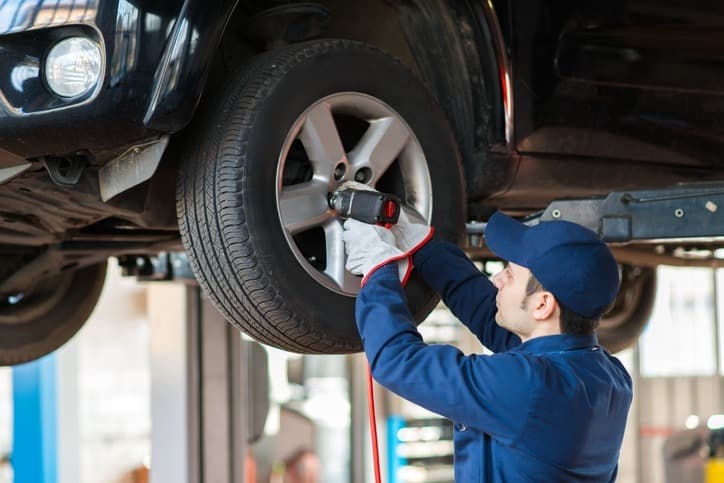Table of Contents
- Introduction to lease car maintenance
- Maintenance requirements during the lease period
- Recommended maintenance tasks
- Tips for maintaining a leased car
- Conclusion: The Importance of Meeting Lease Car Maintenance Requirements
- Frequently Asked Questions about lease car maintenance.
Home » Lease Car Maintenance Requirements: A Comprehensive Guide
Introduction to lease car maintenance
If you’re considering leasing a car, you may be wondering about the maintenance requirements that come along with it. Leasing a car is a popular option for those who want to drive a newer model without committing to purchasing it outright. However, it’s important to understand that leasing a car involves certain responsibilities, including maintaining the vehicle to a certain standard.
It’s crucial to follow the maintenance requirements outlined in your lease agreement to ensure that you don’t face any penalties or fines. Failing to meet these requirements can result in costly repairs or fees, which can eat into any financial benefits you may have gained by leasing a car.
Maintaining a leased car also helps to ensure that it stays in good condition throughout your lease. Proper maintenance can help extend your car’s life and keep it running smoothly, saving you time and money in the long run. Plus, it’s simply a good idea to take care of a vehicle you’ll be driving for an extended time.
In this guide, we’ll provide a comprehensive overview of lease car maintenance requirements and offer tips for meeting those requirements. We’ll cover the maintenance tasks typically outlined in lease agreements and recommended maintenance tasks that can help keep your car in top condition. We’ll also provide tips for finding reputable service centers and considering additional maintenance coverage. By following these guidelines, you can feel confident that you’re meeting your lease car maintenance requirements and keeping your car in great shape.
Maintenance requirements during the lease period
When you lease a car, you’ll be required to follow a certain set of maintenance guidelines to keep the vehicle in good condition. These requirements will be outlined in your lease agreement, which you’ll want to review carefully before signing.
One important aspect of lease car maintenance is staying up-to-date with regular maintenance tasks as specified in the lease agreement. These tasks might include oil changes, tire rotations, brake inspections, and other routine maintenance services. It’s important to keep track of these tasks and make sure they’re completed on schedule, as failure to do so could result in penalties or fines.
In addition to regular maintenance, you’ll also want to keep track of your maintenance records throughout your lease. This includes saving receipts for maintenance services and keeping a record of the dates and types of services performed. Having a complete set of maintenance records can be helpful if you need to prove that you’ve met the requirements of your lease agreement.
It’s worth noting that failing to meet the maintenance requirements of your lease agreement can have serious consequences. If you return the car at the end of your lease and it’s not in the condition required by the agreement, you may be charged for repairs or other fees. In extreme cases, you could even lose your security deposit or face legal action.
Therefore, it’s important to be diligent about meeting your lease car maintenance requirements and keeping your car in good condition. By following the guidelines outlined in your lease agreement and keeping track of your maintenance records, you can avoid potential issues and enjoy a smooth and hassle-free leasing experience.
Recommended maintenance tasks

In addition to the maintenance tasks outlined in your lease agreement, we recommend several other maintenance tasks to keep your leased car running smoothly and in good condition. These tasks are not typically required as part of a lease agreement, but performing them can help extend your car’s life and prevent costly repairs down the road.
Some recommended maintenance tasks for leased cars include:
Oil changes
Changing the oil in your car is an important task that you should perform regularly. Oil helps to lubricate the engine and keep it running smoothly, and dirty or low oil can cause engine wear and damage. Most manufacturer recommendations call for an oil change every 3,000 to 5,000 miles, although this can vary depending on the make and model of your car.
Tire rotations and replacements
Regularly rotating your tires can help to ensure even wear and extend the life of your tires. It’s also important to check your tires for proper inflation and replace them when necessary.
Brake inspections and repairs
Regularly checking your brakes is important to ensure they’re in good working order. If you notice any issues with your brakes, such as grinding or squealing sounds, it’s important to have them checked and repaired as soon as possible.
Battery maintenance
Keeping your battery in good condition is important to ensure that your car starts and runs properly. You can help extend your battery’s life by keeping it clean and charged and having it tested regularly.
Fluid checks and replacements
Checking and replacing your car’s fluids, such as oil, coolant, and transmission fluid, is an important aspect of car maintenance. These fluids help to keep your car running smoothly and prevent damage to the engine and other components.
Engine and transmission maintenance
Regular engine and transmission maintenance can help to keep your car running smoothly and prevent costly repairs. This can include replacing spark plugs, changing the air filter, and checking and replacing the transmission fluid.
By performing these recommended maintenance tasks, you can help to keep your leased car in top condition and avoid any potential issues down the road.
Tips for maintaining a leased car
Maintaining a leased car can seem daunting, but there are several steps you can take to ensure that you’re meeting your maintenance requirements and keeping your car in top condition. Here are a few tips to consider:
- Stay up-to-date with manufacturer recommendations: Every car is different, and it’s important to follow the maintenance recommendations specific to your make and model. You can usually find these recommendations in your owner’s manual or online, and they’ll outline the specific tasks and intervals at which they should be performed. By following these recommendations, you can ensure that you’re taking care of your car in the way it was designed to be taken care of.
- Seek out reputable service centers: When it comes to maintaining your leased car, it’s important to choose a reputable service center with the expertise and equipment to properly care for your vehicle. Look for a service center with certified technicians and a good track record of customer satisfaction.
- Consider purchasing additional maintenance coverage: If you’re worried about the cost of maintaining your leased car, you may consider purchasing additional maintenance coverage. This type of coverage can help cover the costs of regular maintenance tasks and unexpected repairs. Keep in mind, however, that this coverage may come with additional costs and may not be available for all leased vehicles.
By following these tips, you can feel confident that you’re taking the best care of your leased car and meeting your maintenance requirements. By maintaining your car properly, you can ensure that it stays in good condition and avoid costly repairs or fees down the road.
Conclusion: The Importance of Meeting Lease Car Maintenance Requirements
In conclusion, meeting your lease car maintenance requirements is an important aspect of leasing a car. By following the guidelines outlined in your lease agreement and performing recommended maintenance tasks, you can help to keep your car in good condition and avoid any potential issues or fees.
Proper maintenance can also help extend the life of your leased car and keep it running smoothly, saving you time and money in the long run. By staying up-to-date with manufacturer recommendations, seeking out reputable service centers, and considering additional maintenance coverage, you can ensure that you’re taking the best care of your leased car.
Overall, following your lease car maintenance requirements is an essential part of the leasing process. By being diligent about maintaining your car, you can enjoy a smooth and hassle-free leasing experience and feel confident that you’re driving a reliable and well-cared-for vehicle.
Frequently Asked Questions about lease car maintenance.
What are lease car maintenance requirements?
Lease car maintenance requirements refer to the guidelines that must be followed in order to keep a leased car in good condition during the lease period. These requirements are typically outlined in the lease agreement and may include tasks such as regular oil changes, tire rotations, and brake inspections.
Why is it important to meet lease car maintenance requirements?
It’s important to meet lease car maintenance requirements to avoid penalties or fines, as well as to keep the car in good condition. Failing to meet these requirements can result in costly repairs or fees, which can eat into any financial benefits you may have gained by leasing a car.
What happens if I don’t meet my lease car maintenance requirements?
You may face penalties or fines if you don’t meet your lease car maintenance requirements. In extreme cases, you could even lose your security deposit or face legal action. Additionally, if you return the car at the end of your lease and it’s not in the condition required by the agreement, you may be charged for repairs or other fees.
Are there any recommended maintenance tasks in addition to those outlined in the lease agreement?
Yes, in addition to the maintenance tasks outlined in your lease agreement, several other maintenance tasks are recommended to keep your leased car running smoothly and in good condition. These tasks may include oil changes, tire rotations, brake inspections, battery maintenance, fluids checks and replacements, and engine and transmission maintenance.
What are some tips for maintaining a leased car?
Some tips for maintaining a leased car include staying up-to-date with manufacturer recommendations, seeking out reputable service centers, and considering purchasing additional maintenance coverage.


